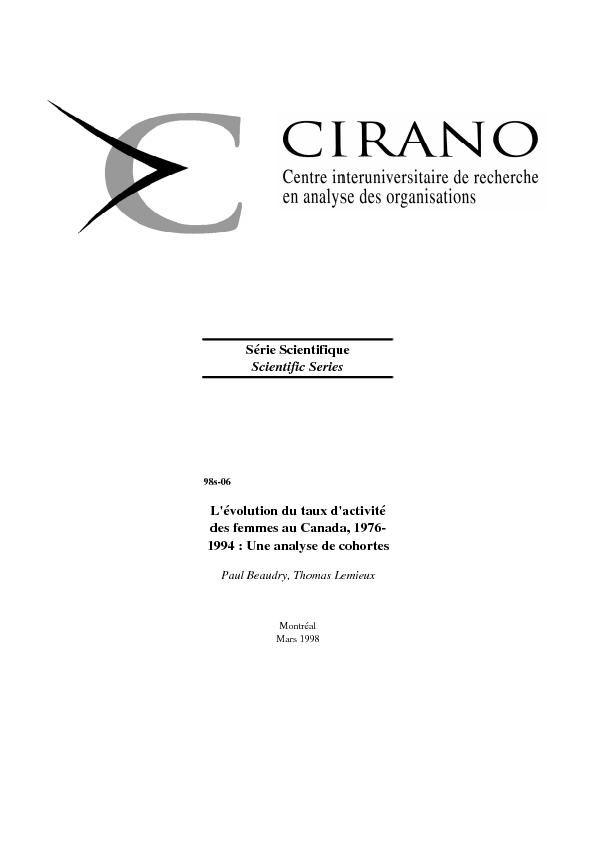L'évolution du taux d'activité des femmes au Canada, 1976-1994 : Une analyse de cohortes
This paper assesses the contribution of cohort effects, age composition effects, and macroeconomic factors in the evolution of the female labour force participation rate in Canada between 1976 and 1994. Using data from the Survey of Consumer Finances, we find that cohort effects are the0501n factor behind the recent stagnation in female participation rates. Though the poor macroeconomic performance of the Canadian economy during the 1990s has also contributed to this phenomenon, it cannot explain in itself why the behavior of female participation rates in the 1990s was so different than in previous decades. We reach similar conclusions when we analyse the evolution of the employment rate. One related finding is that both the level and the slope of the age-participation profiles of women have changed over time. While older cohorts had profiles that were sloping up between the ages of 25 and 50, younger cohorts exhibit much flatter (and higher) profiles for the same age range. In other words, age-participation profiles of women increasing look like those of men which are flat at very high levels before declining after age 50.
[ - ]




